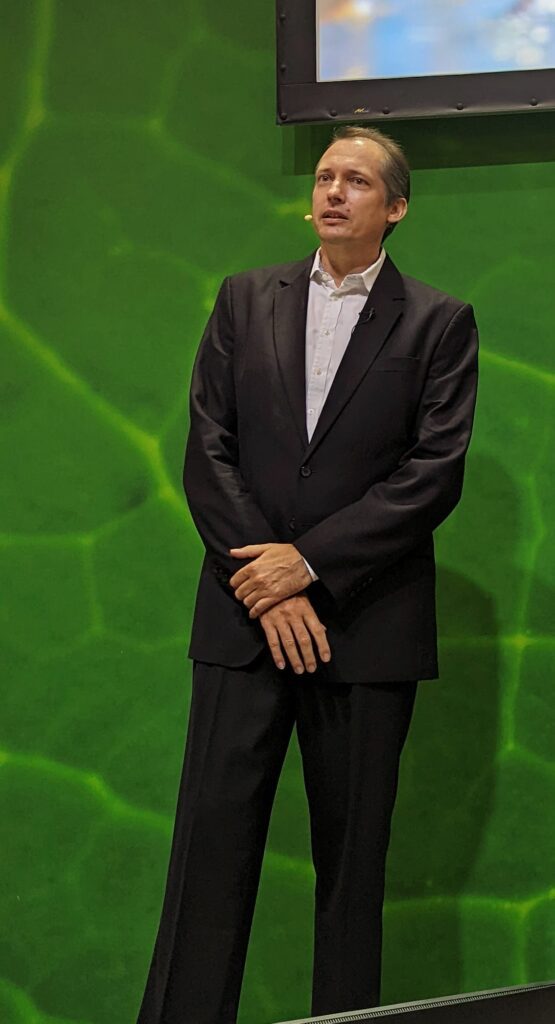
Carsten Buhl of Ernst & Young speaks on August 22 at Achema’s Hydrogen Economy morning session (Source: Bailey)
Regulations on what exactly “green” means, in force within the European Union (EU) since 2020, are important in driving the new hydrogen economy, said Robert Seiter of consultancy Ernst & Young WPG (Hall 11.0, Stand C57, Achema) at Monday morning’s congress session on hydrogen and power-to-X.
Although today’s chemical industry is much less polluting than it was 20 years ago, Seiter said, its CO2 emissions are not falling. Improving that situation – in transportation and other industries as well – requires capital, and the EU’s environmental “taxonomy” helps to give investors confidence in the face of changing legislation and public attitudes.
By addressing issues, such as water, biodiversity, climate change adaptation and the circular economy, the EU system helps to cut through “greenwash” in defining the environmental performance of hundreds of types of products and services. “Building a green hydrogen plant in the middle of a nature reserve is not an acceptable solution,” Seiter said, and he noted that some US states are starting to adopt similar principles.
The current standard for green hydrogen allows emissions of 3 kg CO2eq per kg of hydrogen. As well as electrolysis from renewable or nuclear electricity, acceptable methods of production include steam methane reforming with carbon capture and methane pyrolysis.
Later in the same session, Dr. Max Ellerich, Technical Director with NEA Green, tried to answer the challenging question of which green hydrogen applications already make economic sense for investors, and which may need further legislation before they become profitable. His company, whose parent Neuman & Esser is known for reciprocating compressors, is involved with a wide range of hydrogen applications, including electrolyzers and synthetic fuels.
Given the current economics for green hydrogen production, Ellerich sees transportation as an application that may be attractive enough to drive market expansion. A fleet of city buses, he explained, is an example of a distributed application that suits the small size – 5 MW, for instance – of many existing commercial electrolyzers.
Distributed production is also one way to work around the high costs of transporting hydrogen by road, Ellerich noted. Hydrogen pipelines and networks, while ideal, will take time and money to build. In the meantime, hydrogen’s low density – even when compressed to 400 bar – makes it costly to transport by road for distances about 200 km. Liquefaction raises the energy density, but with higher investment costs and conversion losses.
Earlier in the session, Carsten Buhl of Ernst & Young reminded the audience of Germany’s target to achieve 95% decarbonization (from 2018 levels) by 2045. The chemical industry is responsible for about 12% of the country’s CO2 emissions, of which 29% takes the form of direct emissions. 21% is indirect emissions from electricity and heat generated elsewhere, and the remaining 50% is indirect emissions from elsewhere in the supply chain. “I estimate that perhaps 60% of the chemical industry’s CO2 emissions could be addressed through green hydrogen,” Buhl said.
Also at Achema, some of Germany’s flagship Green Hydrogen projects are being showcased
Note: This article was originally published as part of the Achema Official Show Daily